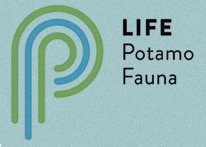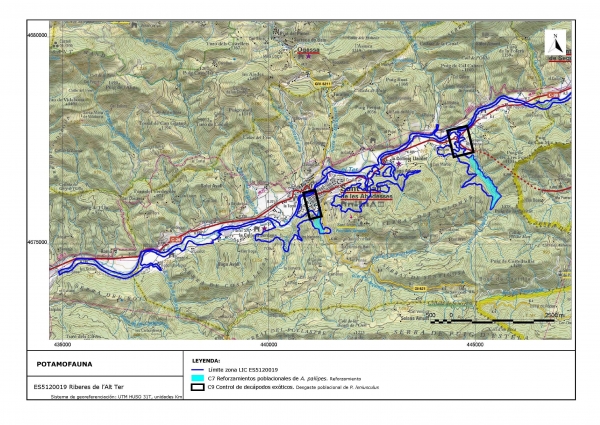Riparian habitats of the Upper Ter
Area: 409.830 ha.
The Riparian habitats of the Upper Ter Natura 2000 zone (ES5120019) is a river area with permanent water riparian forests in the headwaters of the River Ter. It is a protected natural area that includes the banks of the River Ter along the valley from Camprodon to Ripoll, and some zones of RitortRiver wooded areas nearby.
The Ter river is the largest and significant river of the eastern part of the Spanish alpine region. The geographical area corresponds to the northern Catalan Pre-Pyrenees. The space includes river areas and includes Camprodon Valley, where the river Ter joins one of its tributaries, the Ritort river. Both rivers are permanent and hold good riparian forests. This area represents the only representation of Mediterranean Barbel (Barbus meridionalis) in the Natura 2000 network of the Alpine region and understands Spanish approximately 75% of its range.
The working area of the project does not include all of the SCI space, but a big part in this space was eminently river. Here the project area focuses only on streams and rivers, involving an area centered around these environments where live aquatic species live, and which are main aims of the project.
This space has been built mainly to conserve populations of White-clawed Crayfish (Austropotamobius pallipes). The catalogue of threatened fauna of Catalonia (pending approval) this species have been considered endangered (its short-term survival is unlikely). It has a wide distribution in Catalonia, but very localized mainly in small and undisturbed creeks and streams. The situation of the crab in space LIC banks Alt Ter is extremely delicate. Its populations are located in a few second order and higher streams where due to a natural barrier (drought, cliffs, ...) the fungus Crayfish plague has not been reached. Currently populations suffer the threat of the spread of invasive crayfish.
The precise details about the process of reproduction in captivity of Austropotamobius pallipes can been found in the corresponding protocol established in accordance with the objectives of this project. One of the essential factors to incorporate this protocol is to maintain breeding lines for each separate area of origin of the parental units. The reinforcements population will be carried out in appropriate sectors included in the SCI area covered by the project. About the sectors where the species has disappeared, but always within the LIC which is still present, this will enable the establishment of new populations are at least 1 in every LIC.
In this area some actions have been planned for translocation of specimens from existing populations or from specimens of captive breeding.

















